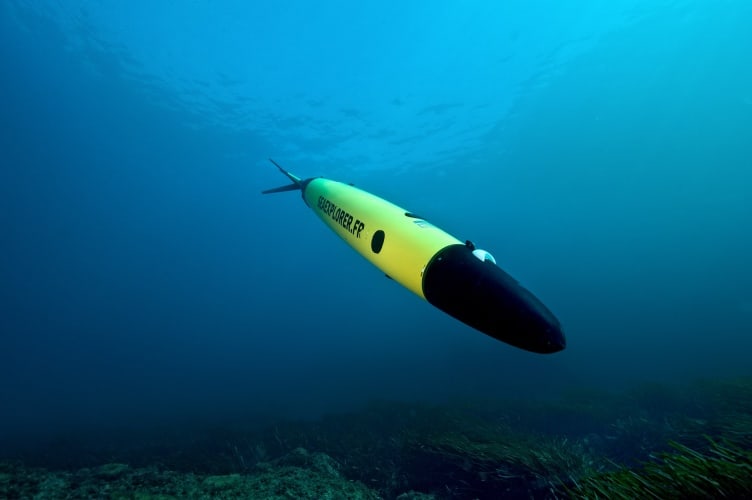
It is the third in a series of demonstrator missions run by the National Oceanography Centre (NOC), and sees the biggest ever robot fleet operating simultaneously in UK waters. A total of seven submarine gliders and three surface Wave Gliders will collect environmental data, feeding it back to the Royal Navy in real time. After Unmanned Warrior has ended, the data will be made available to the wider scientific community.
“This deployment will showcase the capabilities of marine robots to the Royal Navy, and other defence and industry partners,” said the NOC’s Professor Russell Wynn, chief scientist of the mission.
“The results will also inform the wider scientific and environmental community of the benefits of these new technologies as an alternative to manned vessels, which are relatively expensive to operate and have a larger environmental impact.”
As well as collecting basic information on ocean temperature, salinity, oxygen, turbidity, and near-surface weather conditions, the gliders will also be measuring ocean currents, water depth, and the abundance of plankton in hotspots where different bodies of water meet. According to the NOC, some of the vehicles will be travelling over 150 km offshore of the Outer Hebrides, and venturing into waters up to a mile deep.
Most of the gliders will be piloted via satellite from an operations room at the NOC, but some project partners will be controlling their vehicles from as far away as the US and Australia. The goal of the mission is to provide the Royal Navy with as much real-time data as possible over the course of the exercise, and over 20 different organisations are working together on the project.
“Industry partners providing vehicles and piloting support include Liquid Robotics, Boeing, RS Aqua and Blue Ocean Monitoring,” said Rolly Rogers of the NOC, the mission’s operations manager.
“Royal Navy are deploying and recovering the submarine gliders, software experts such as Esri UK, Helyx and SeeByte will help us visualise incoming data, and Plymouth Marine Laboratory and UK Met Office will ensure we have the most up-to-date satellite images and weather forecasts to support mission planning.”
The Unmanned Warrior exercise is set to take place off the coast of Scotland and Wales next month. Previous coverage by The Engineer can be found at: Battle stations: Autonomous systems readied for Unmanned Warrior exercise




Project to investigate hybrid approach to titanium manufacturing
What is this a hybrid of? Superplastic forming tends to be performed slowly as otherwise the behaviour is the hot creep that typifies hot...